History
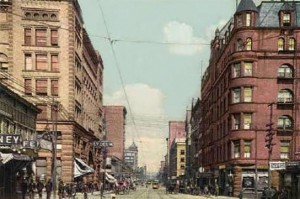 A couple of years ago, my mom, Collene Spencer, my sister, Cheryl Masterson, and I made a trip back to Superior, Wisconsin and Duluth, Minnesota to reconnect, and meet family members there. We had a wonderful trip, and both my sister and I have found sites on Facebook that display pictures of the area. Cheryl and I were both born in Superior, Wisconsin, so we feel a closeness to the area, even though we have not lived there for many years. It is still the area of our roots. Now that we have been back in a more recent time, a continue to feel drawn to the area. The strange thing is that the things I am interested in at this time, are more historic things…some of them, things that no longer exist. In my memory, we didn’t spend a lot of time in Duluth, but I’m probably mistaken on that count…at least to a degree. Superior, Wisconsin and Duluth, Minnesota are so close to each other, that if there were no signs to tell you so, you might not realize that you have left one and entered the other. I’m sure my parents shopped in Duluth, simply because as the larger of the two cities, there was quite likely more variety there.
A couple of years ago, my mom, Collene Spencer, my sister, Cheryl Masterson, and I made a trip back to Superior, Wisconsin and Duluth, Minnesota to reconnect, and meet family members there. We had a wonderful trip, and both my sister and I have found sites on Facebook that display pictures of the area. Cheryl and I were both born in Superior, Wisconsin, so we feel a closeness to the area, even though we have not lived there for many years. It is still the area of our roots. Now that we have been back in a more recent time, a continue to feel drawn to the area. The strange thing is that the things I am interested in at this time, are more historic things…some of them, things that no longer exist. In my memory, we didn’t spend a lot of time in Duluth, but I’m probably mistaken on that count…at least to a degree. Superior, Wisconsin and Duluth, Minnesota are so close to each other, that if there were no signs to tell you so, you might not realize that you have left one and entered the other. I’m sure my parents shopped in Duluth, simply because as the larger of the two cities, there was quite likely more variety there.
Recently, I started looking into some of the history of that general area, and stumbled on something 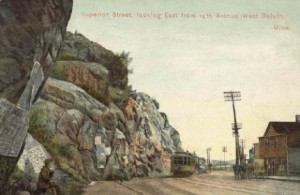 interesting. Duluth had an incline railway. Personally, I like incline railways, but I have never seen one that was in a city. Incline railways seem more like something that you would see at a tourist attractions, than anything that you would use in everyday life. Nevertheless, Duluth, in 1891, had a streetcar line, and in December 1891, the Duluth Street Railway Company opened the incline railway, as part of that street car line. The Incline Railway was on the right-of-way of Seventh Avenue West. The Duluth Street Railway Company had received a charter from the state in 1881 to build a streetcar line for Duluth. The hillside on Seventh Avenue West was too steep for a regular rail line, so they built an incline railway for that area. From it’s base station on Superior Street, the Incline climbed 509 feet in slightly more than half a mile, on a ten foot gauge track. Originally, a pair of forty one by fifteen foot cars counterbalanced each other, one going up while the other one descended. They were built to accommodate four teams and wagons, or up to 250 standing passengers. The Incline was powered by a stationary steam engine at the top. The trip took sixteen minutes, one way…just enough time to make it an enjoyable trip.
interesting. Duluth had an incline railway. Personally, I like incline railways, but I have never seen one that was in a city. Incline railways seem more like something that you would see at a tourist attractions, than anything that you would use in everyday life. Nevertheless, Duluth, in 1891, had a streetcar line, and in December 1891, the Duluth Street Railway Company opened the incline railway, as part of that street car line. The Incline Railway was on the right-of-way of Seventh Avenue West. The Duluth Street Railway Company had received a charter from the state in 1881 to build a streetcar line for Duluth. The hillside on Seventh Avenue West was too steep for a regular rail line, so they built an incline railway for that area. From it’s base station on Superior Street, the Incline climbed 509 feet in slightly more than half a mile, on a ten foot gauge track. Originally, a pair of forty one by fifteen foot cars counterbalanced each other, one going up while the other one descended. They were built to accommodate four teams and wagons, or up to 250 standing passengers. The Incline was powered by a stationary steam engine at the top. The trip took sixteen minutes, one way…just enough time to make it an enjoyable trip.
In 1925, it was noted that the Incline carried an average of 2,170 weekday passengers, while the connecting 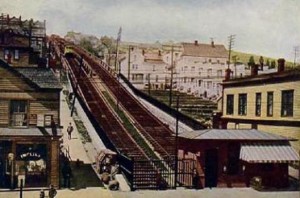 Highland streetcar line carried an average of only 1,114 weekday passengers. I’m sure that was because people like incline railways…they are unique….besides, climbing that hill would not be fun. Hourly checks showed that most riders traveled downhill in the morning rush hour and uphill during the afternoon rush hour. Most likely they were commuting to and from work. The Duluth Incline Railway was never profitable. Nevertheless, it and the Highland line were the last remnants of the streetcar system to be replaced by buses. Their last day of service was September 4, 1939. For that reason, I’m sure that many of the current residents of Duluth don’t even know about the incline railroad. I didn’t either, until I stumbled on it.
Highland streetcar line carried an average of only 1,114 weekday passengers. I’m sure that was because people like incline railways…they are unique….besides, climbing that hill would not be fun. Hourly checks showed that most riders traveled downhill in the morning rush hour and uphill during the afternoon rush hour. Most likely they were commuting to and from work. The Duluth Incline Railway was never profitable. Nevertheless, it and the Highland line were the last remnants of the streetcar system to be replaced by buses. Their last day of service was September 4, 1939. For that reason, I’m sure that many of the current residents of Duluth don’t even know about the incline railroad. I didn’t either, until I stumbled on it.
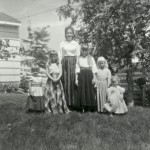 As kids growing up, my sisters and I were subjected to many stories, view, songs, and events that centered around the Old West. When I say subjected, I don’t mean that we hated every minute of I, because we didn’t. We lived in Wyoming, and therefore we embraced the Old West. I can’t say that my sisters and I always liked all things western, because that would be false too. We all went through our Rock and Roll era, and during that time, we pretty much hated Country music, although shows like Bonanza, the Rifleman, Wagon Train, and The Virginian…just to name a few, were among our favorites, and we each had our favorite actors, and we were going to “marry” them. I know, silly…right?
As kids growing up, my sisters and I were subjected to many stories, view, songs, and events that centered around the Old West. When I say subjected, I don’t mean that we hated every minute of I, because we didn’t. We lived in Wyoming, and therefore we embraced the Old West. I can’t say that my sisters and I always liked all things western, because that would be false too. We all went through our Rock and Roll era, and during that time, we pretty much hated Country music, although shows like Bonanza, the Rifleman, Wagon Train, and The Virginian…just to name a few, were among our favorites, and we each had our favorite actors, and we were going to “marry” them. I know, silly…right?
Back then, the Old West was still considered something that people were proud to know about, or even to know people who lived those times. It was the times that our grandparents grew up in, and that 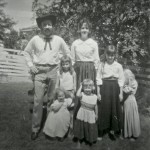 made it even more cool. I don’t suppose that the kids of today look back on the Old West or even the 1950s, 1960s, or 1970s, as being cool, because those times were before personal computers and cell phones, so I’m sure it seemed like the dark ages to the kids of today. Those years were probably best known for protests…unless you compare that era to today’s, when everyone is so offended by everything. Even when I look back on my childhood years, I can’t say that I think we as a generation did anything so amazing…at least not until we grew up, because of course, it is our generation that invented the computer and cell phone. Nevertheless, it was a vastly different era that the Old West…or maybe that’s just my opinion.
made it even more cool. I don’t suppose that the kids of today look back on the Old West or even the 1950s, 1960s, or 1970s, as being cool, because those times were before personal computers and cell phones, so I’m sure it seemed like the dark ages to the kids of today. Those years were probably best known for protests…unless you compare that era to today’s, when everyone is so offended by everything. Even when I look back on my childhood years, I can’t say that I think we as a generation did anything so amazing…at least not until we grew up, because of course, it is our generation that invented the computer and cell phone. Nevertheless, it was a vastly different era that the Old West…or maybe that’s just my opinion.
While we were little, many of the cities and states were celebrating their centennial years, and it was a big deal!! Contests were held to see who could grow the best beard, and I’m sure who had the best Old Western costume. My Dad, Allen Spencer, decided to grow a beard for the competition. I don’t know if he won or not, or even if he entered any contest at all, but he got in on the festivities…as did Dad’s girls. We each had a long dress, much like the women of the Old West wore, and our parents took pictures to document the events. It was a great time, and they made sure that they had plenty of pictures of it.
These days, you seldom hear of such events. I don’t know if states or cities are 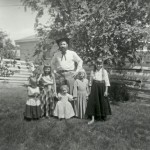 just not at the right point, or if many people have just lost interest, or what has happened exactly, but you don’t see these things happening. I find that sad, because our family found it to be very fun and interesting. Of course, there are still reinactments of old western robberies, the pony express, and wagons west trips, and I think those would be fun, but for some reason that centennial just seemed different…more interesting somehow…like we were a real pioneer family.
just not at the right point, or if many people have just lost interest, or what has happened exactly, but you don’t see these things happening. I find that sad, because our family found it to be very fun and interesting. Of course, there are still reinactments of old western robberies, the pony express, and wagons west trips, and I think those would be fun, but for some reason that centennial just seemed different…more interesting somehow…like we were a real pioneer family.
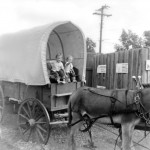 Over the years of our childhood, my sisters and I were exposed to the history of this great nation. Mom and Dad loved the things that showcased the Old West, including Country Music, old western movies, and western books, but they mostly wanted to show us the places where the Old West really happened. Of course, some of the places were replicas of the real thing, such as Wall Drug. Any time we went through South Dakota and there was enough time, we stopped at Wall Drug. It’s funny to think that a drug store could be called a tourist attraction, but with all the wagons, horse statues, and photo boards, people come just to see the sights in the drug store. Wall Drug is in the town of Wall, South Dakota…a huge town of 906 people…and that is today, so I’m sure it was much smaller when I was a little girl. In fact, I don’t recall anything about the town of Wall…just the drug store. I suppose that sounds funny, but the drug store really was the coolest place in town.
Over the years of our childhood, my sisters and I were exposed to the history of this great nation. Mom and Dad loved the things that showcased the Old West, including Country Music, old western movies, and western books, but they mostly wanted to show us the places where the Old West really happened. Of course, some of the places were replicas of the real thing, such as Wall Drug. Any time we went through South Dakota and there was enough time, we stopped at Wall Drug. It’s funny to think that a drug store could be called a tourist attraction, but with all the wagons, horse statues, and photo boards, people come just to see the sights in the drug store. Wall Drug is in the town of Wall, South Dakota…a huge town of 906 people…and that is today, so I’m sure it was much smaller when I was a little girl. In fact, I don’t recall anything about the town of Wall…just the drug store. I suppose that sounds funny, but the drug store really was the coolest place in town.
Of course, when Mom and Dad took us to see relics of the old West, they would take us to places like an old  fort, which inevitably included an old cabin with a sod roof. People these day, have no idea how that worked…unless they had parents who made sure that they got to see a real one. Even when you study about it in school, there is nothing quite like being able to see what it was really like inside a house with dirt and grass for a roof. I have read books like, “Young Pioneers” and the “Little House On The Prairie” books, that talk about having a sod roof, or even a Soddy, which is a house built out of sod, often into a hillside. The floors were obviously dirt, and the homemaker would actually sweep those dirt floors. As I read about that, I began to wonder if those women weren’t just a little bit crazy, but then again, I suppose that if you left the crumbs in the house, you would have more bugs than normal, because I personally don’t see any way to have a sod home be completely bug free. And of course, depending on what got spilled, the floor could take on a sticky life of its own. After thinking about that for a little while, I think I might consider sweeping that dirt floor too.
fort, which inevitably included an old cabin with a sod roof. People these day, have no idea how that worked…unless they had parents who made sure that they got to see a real one. Even when you study about it in school, there is nothing quite like being able to see what it was really like inside a house with dirt and grass for a roof. I have read books like, “Young Pioneers” and the “Little House On The Prairie” books, that talk about having a sod roof, or even a Soddy, which is a house built out of sod, often into a hillside. The floors were obviously dirt, and the homemaker would actually sweep those dirt floors. As I read about that, I began to wonder if those women weren’t just a little bit crazy, but then again, I suppose that if you left the crumbs in the house, you would have more bugs than normal, because I personally don’t see any way to have a sod home be completely bug free. And of course, depending on what got spilled, the floor could take on a sticky life of its own. After thinking about that for a little while, I think I might consider sweeping that dirt floor too.
When I think about it though, what would the Old West be, without horses. I can’t say that I ever gave any  thought to having horses of my own, but I think horses are awesome, if someone else has to clean up the stalls. There were people that Mom and Dad knew, who had horses, and they might have been family members for all I know. Having friends or family who had horses made it possible for us to have a little bit of exposure to horses and how they were. I can’t imagine having to travel everywhere by horse, but riding one is a lot of fun. I feel like our parents gave my sisters and me vacations combined with education. Mom and Dad always made it feel like we were really there in the Old West. It was like going back in time. It was an education that you couldn’t get in school, and while I was no fan of history in school, I must say that history as my parents taught it to us, was an amazing journey.
thought to having horses of my own, but I think horses are awesome, if someone else has to clean up the stalls. There were people that Mom and Dad knew, who had horses, and they might have been family members for all I know. Having friends or family who had horses made it possible for us to have a little bit of exposure to horses and how they were. I can’t imagine having to travel everywhere by horse, but riding one is a lot of fun. I feel like our parents gave my sisters and me vacations combined with education. Mom and Dad always made it feel like we were really there in the Old West. It was like going back in time. It was an education that you couldn’t get in school, and while I was no fan of history in school, I must say that history as my parents taught it to us, was an amazing journey.
 The presents are purchased, the packages wrapped, all of the commercialized aspects of the day are over now and there is finally time to take a moment to ponder the real reason for the Christmas season…the birth of our Saviour…Jesus. So often, we spend so much time rushing around trying to get ready for the holiday, that we have little time to think about the wonderful thing our Father, God did for us!! We were a world lost, and destined for Hell!! He had no obligation to help us. We got into this predicament by ourselves…and He could have left us there, but God’s love is not like human love. We hold grudges…even with those we love. God does not hold grudges, but rather, He set out to make a plan to turn it all around. He came up with a plan to send Jesus to Earth…and worked it out so that He lived a sinless life, as a human, and then paid the price… the ultimate price. And Jesus agreed to the plan. He gave his life for us so we could live our lives under grace, and receive Heaven and not Hell in the end.
The presents are purchased, the packages wrapped, all of the commercialized aspects of the day are over now and there is finally time to take a moment to ponder the real reason for the Christmas season…the birth of our Saviour…Jesus. So often, we spend so much time rushing around trying to get ready for the holiday, that we have little time to think about the wonderful thing our Father, God did for us!! We were a world lost, and destined for Hell!! He had no obligation to help us. We got into this predicament by ourselves…and He could have left us there, but God’s love is not like human love. We hold grudges…even with those we love. God does not hold grudges, but rather, He set out to make a plan to turn it all around. He came up with a plan to send Jesus to Earth…and worked it out so that He lived a sinless life, as a human, and then paid the price… the ultimate price. And Jesus agreed to the plan. He gave his life for us so we could live our lives under grace, and receive Heaven and not Hell in the end.
So often, the birth of our Saviour is all but forgotten in the mix of Santa Clause and a big dinner. I find that really sad, especially in light of the sacrifice He made for us. I can’t imagine being God and deciding to take on a human form, much less a baby who is for much of its young life helpless, and forced to rely on others for all your needs. Then, while you had never sinned in any way, you are taken captive, beaten, and nailed to a cross. Then in the only way it could possibly work, Jesus was separated for God, while he took all the sins of the world on himself. It had to be, because the worst result of sin, is separation for God. That would be far worse than Hell could ever be. God’s love is the most important thing we have. It is what saves us from the pit of Hell.
 There is nothing wrong with the Christmas traditions we cherish so much, and giving has always been what God is all about. The main thing is that in the midst of all of our traditions, we take time to be thankful for the greatest gift ever given. “For God so loved the world that He gave His only begotten Son, that whoever believes in Him should not perish but have everlasting life.” John 3:16, one of the most important verses in a book that is the greatest book ever written…the Bible. God is love, and when we sinned, He stepped up and made a way for us to be reconciled to him. He sent a Saviour named Jesus. And that is the real reason for the Christmas season. Merry Christmas everyone!! May God bless you all!!
There is nothing wrong with the Christmas traditions we cherish so much, and giving has always been what God is all about. The main thing is that in the midst of all of our traditions, we take time to be thankful for the greatest gift ever given. “For God so loved the world that He gave His only begotten Son, that whoever believes in Him should not perish but have everlasting life.” John 3:16, one of the most important verses in a book that is the greatest book ever written…the Bible. God is love, and when we sinned, He stepped up and made a way for us to be reconciled to him. He sent a Saviour named Jesus. And that is the real reason for the Christmas season. Merry Christmas everyone!! May God bless you all!!
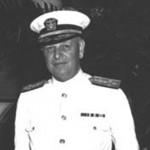 It seems that whenever something goes wrong in our world, someone must be to blame, and I believe that is often the case. The problem with playing The Blame Game, is that all too often, the person where the real blame should go is not the one who ends up taking the fall. Scapegoats have been around since Bible times, when the sins of the people were placed on a goat and it was sent into the windernesss. That isn’t the type of scapegoat that we see today, however.
It seems that whenever something goes wrong in our world, someone must be to blame, and I believe that is often the case. The problem with playing The Blame Game, is that all too often, the person where the real blame should go is not the one who ends up taking the fall. Scapegoats have been around since Bible times, when the sins of the people were placed on a goat and it was sent into the windernesss. That isn’t the type of scapegoat that we see today, however.
Don’t get me wrong, we all play The Blame Game, but politicians seem to be particularly adept at it. A good example is the forced retirement of Rear Admiral Husband E Kimmel, who was relieved of his command of the United States Pacific Fleet on December 17, 1941, just ten days after the Japanese attack on Pearl Harbor. I don’t say that he bore no blame at all, but in reality, he had no more reason to think that an attack on Pearl Harbor was imminent, than anyone else had. And in reality, the blame needed to fall on our President at the time, Franklin Delano Roosevelt, because he was soft on the Japanese, and basically asked us to trust them, when they were not at all 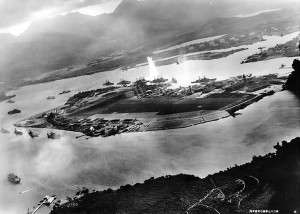 trustworthy. President Roosevelt’s actions…or lack thereof, left us sitting ducks when the Japanese made their move.
trustworthy. President Roosevelt’s actions…or lack thereof, left us sitting ducks when the Japanese made their move.
Basically, Rear Admiral Kimmel was chosen to take the blame because of his lack of imagination…or so it was said. Kimmel was a creature of habit, and he had expected an attack on Midway Island or Wake Island, and even went so far as to request extra antiaircraft artillery be sent there. None could be spared, and so was not sent. It never occurred to him that the Japanese might attack Pearl Harbor, and therefore he took no special action there. Unfortunately, Kimmel was an easy read by the Japanese, and when he chose not to protect Pearl Harbor, that was where the Japanese made their attack. But, as I said, he had no more reason to expect an attack at Pearl Harbor than anyone else had, and for that reason he should not have born the brunt of the blame.
Kimmel could have faced court martial…a second and even more severe injustice…but in the end, when he requested early retirement, his request was granted. The American people were outraged at this breach in 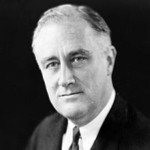 security, so someone had to take the blame. I really find that to be an unfair way to handle this situation, but it was how it was done anyway. When Admiral Kimmel’s Story, which was an “as told to” autobiography, was published in 1955, the admiral made it clear that he believed President Roosevelt sacrificed him, and his career, to take suspicion off himself. Although there was no evidence to prove it, Kimmel believed Roosevelt knew Pearl Harbor was going to be bombed. I’m not sure Roosevelt could have known that either, but I think he was just as much or more to blame than Kimmel was. There always seems to be enough blame to go around, but in reality, trusting our enemies will always bring bad results. We need to be watchful and strong in military might to keep this nation safe.
security, so someone had to take the blame. I really find that to be an unfair way to handle this situation, but it was how it was done anyway. When Admiral Kimmel’s Story, which was an “as told to” autobiography, was published in 1955, the admiral made it clear that he believed President Roosevelt sacrificed him, and his career, to take suspicion off himself. Although there was no evidence to prove it, Kimmel believed Roosevelt knew Pearl Harbor was going to be bombed. I’m not sure Roosevelt could have known that either, but I think he was just as much or more to blame than Kimmel was. There always seems to be enough blame to go around, but in reality, trusting our enemies will always bring bad results. We need to be watchful and strong in military might to keep this nation safe.
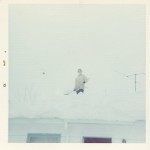
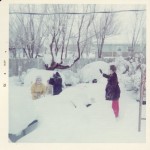 It’s every school aged child’s dream…enough snow to have the school district call a Snow Day. The only bad thing is that they are always few and far between. Nevertheless, I can remember a few of those snow days from my childhood. They made for good rivals for the storm we had overnight, in the amount of snow received. I remember one storm in particular from those days, when we were told that the snow was very heavy, and people needed to shovel it off of their roof to protect the roof from collapse. Well, like most kids on a snow day, we didn’t need a second invitation to go outside and play. It’s funny how that works. The plan was to go out an shovel off the roof, but while that did happen, there was a lot of playing in the snow too. Now mind you that the school district had decided that it was too cold, too snowy, and definitely the snow was too deep to have the kids walk the relatively short distance…five blocks in our case..to school, but we could spend half the day outside playing in the snow. I could see the problem if it had been blizzard conditions, but it wasn’t. Nevertheless, on a snow day,
It’s every school aged child’s dream…enough snow to have the school district call a Snow Day. The only bad thing is that they are always few and far between. Nevertheless, I can remember a few of those snow days from my childhood. They made for good rivals for the storm we had overnight, in the amount of snow received. I remember one storm in particular from those days, when we were told that the snow was very heavy, and people needed to shovel it off of their roof to protect the roof from collapse. Well, like most kids on a snow day, we didn’t need a second invitation to go outside and play. It’s funny how that works. The plan was to go out an shovel off the roof, but while that did happen, there was a lot of playing in the snow too. Now mind you that the school district had decided that it was too cold, too snowy, and definitely the snow was too deep to have the kids walk the relatively short distance…five blocks in our case..to school, but we could spend half the day outside playing in the snow. I could see the problem if it had been blizzard conditions, but it wasn’t. Nevertheless, on a snow day,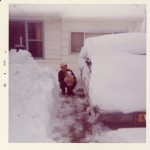
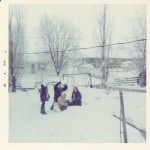 playing outside all day was far better than trudging off to school.
playing outside all day was far better than trudging off to school.
Deep snow is always extra fun, because it makes building a fort much easier, and believe me, that snow and this snow today…are deep. the snow is heavy and easily formed into walls or snowballs. Before long the fight was on. I’m sure that our parents loved hearing the screams of laughter as their daughters played happily out in the back yard. You see, sometimes, snow days are for adults too. Today for instance, my car could not begin to drive down the alley from my garage, and we will have to go our and dig snow later to get it out so it can be parked in from of the house…if I am to make it to work tomorrow. When my husband, Bob left for work this morning, his truck was dragging on the deep snow, and my car sits much lower than his truck. The snow day of yesteryear that comes to mind was the one where my dad got to stay home too. In fact, he city was even asking people to offer to transport people on snowmobiles in the event of an emergency.
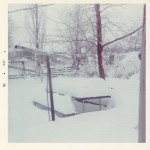
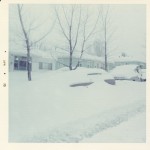 That didn’t affect us in any way though, because we didn’t have snowmobiles, nor did we have need of one. We were busy outside trying to move the snow from one spot to another, so that we could move from point “a” to point “b” with a little bit of ease. And the only reason we were doing that was because we wanted to see just how deep the snow really was. We weren’t going anywhere…we had nowhere to go…because it was a snow day, and everyone knows that everything of any importance to a kid is closed on a snow day…especially the school.
That didn’t affect us in any way though, because we didn’t have snowmobiles, nor did we have need of one. We were busy outside trying to move the snow from one spot to another, so that we could move from point “a” to point “b” with a little bit of ease. And the only reason we were doing that was because we wanted to see just how deep the snow really was. We weren’t going anywhere…we had nowhere to go…because it was a snow day, and everyone knows that everything of any importance to a kid is closed on a snow day…especially the school.
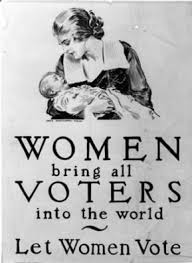 I’m sure that most people who are from Wyoming have heard it said that Wyoming is about 20 years behind the times. I suppose that in some ways we are, and I don’t think that is always a bad thing. If we are twenty years behind everyone else on crime, for instance, I’m happy. I’ll admit that for anyone who is looking for the latest styles or latest gadget…well, it can take a little longer to get to Wyoming. Nevertheless, Wyoming hasn’t always been 20 years behind the times. In fact, on this day, December 10, 1869, Wyoming stepped out ahead of the pack, when the Wyoming territorial legislators passed a bill that was signed into law, giving women the right to vote.
I’m sure that most people who are from Wyoming have heard it said that Wyoming is about 20 years behind the times. I suppose that in some ways we are, and I don’t think that is always a bad thing. If we are twenty years behind everyone else on crime, for instance, I’m happy. I’ll admit that for anyone who is looking for the latest styles or latest gadget…well, it can take a little longer to get to Wyoming. Nevertheless, Wyoming hasn’t always been 20 years behind the times. In fact, on this day, December 10, 1869, Wyoming stepped out ahead of the pack, when the Wyoming territorial legislators passed a bill that was signed into law, giving women the right to vote.
Many people have speculated that the legislators did not have the best motives for passing the piece of legislation. People speculated that while everyone knew the importance women played in the settlement of the west, they felt that it was really to bolster the strength of the conservative voters. Others will tell you that it was done because the 6,000 adult men were lonely. By making it legal for women to vote, they hoped it would bring in more women, because the 1,000 women in the territory was not a good number when it came to courting. They hoped that the right to vote would be a big draw to women who wanted equal rights.
I can’t say for sure what the real reason was to pass the legislation, but if you ask me, Wyoming was ahead of its time for once. Another group of people who wanted women’s rights wanted it simply because it was the right thing to do. William Bright, who was one of the territorial legislators, who was in his mid-forties, and had a very persuasive wife, was convinced by his wife that denying women the right to vote, was a gross injustice. The other major backer, Edward M. Lee, the territorial secretary who had championed the cause for years, 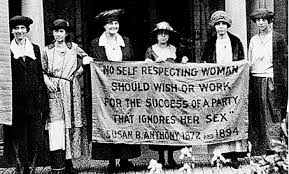 argued that it was unfair for his mother to be denied a privilege granted to African American males. I’m not sure if he should have used that analogy exactly, but the truth is that he was right. If one citizen is allowed to vote, then all citizens who are of age should be allowed to vote.
argued that it was unfair for his mother to be denied a privilege granted to African American males. I’m not sure if he should have used that analogy exactly, but the truth is that he was right. If one citizen is allowed to vote, then all citizens who are of age should be allowed to vote.
I don’t really think that the reasons behind the move to give women the right to vote matter so much as the fact that it happened. I don’t believe in one citizen having for rights, and others who should really have that right too, but are denied. Maybe Wyoming is behind the times in many ways, but is some of the most important ways, they are ahead of their time.
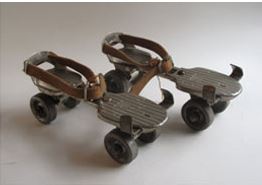 As a kid, going to the roller skating rink was not always an option. Nevertheless, we all loved to skate. Not being able to go to the skating rink all the time didn’t bother us, nor did the uneven sidewalk in front of our house. We learned to overcome those obstacles, because we loved to skate. I suppose it was that age old desire to have wheels to take you where you wanted to go, without having to depend on your parents to get you there…or maybe it was just because it was a lot of fun. The skates I had as a kid were not the fancy ones with the shoe built onto it, because…well our shoe size was always changing. It made no sense to buy new ones every year. That was simply an unnecessary expense.
As a kid, going to the roller skating rink was not always an option. Nevertheless, we all loved to skate. Not being able to go to the skating rink all the time didn’t bother us, nor did the uneven sidewalk in front of our house. We learned to overcome those obstacles, because we loved to skate. I suppose it was that age old desire to have wheels to take you where you wanted to go, without having to depend on your parents to get you there…or maybe it was just because it was a lot of fun. The skates I had as a kid were not the fancy ones with the shoe built onto it, because…well our shoe size was always changing. It made no sense to buy new ones every year. That was simply an unnecessary expense.
 Of course, the problem with those skates that could grow, was that you needed a key to change the length and the width of the skate to fit your shoes. Since feet didn’t grow that fast, it might be a while between the times you needed to change the size, by the time you needed it again, the key was nowhere to be found. This was such a big problem, in fact, that at one point someone came up with a song about two kids…one who had the skates, and one who had the key. It made for a good partnership…or maybe it was just necessity that they become friends. Either way, having a skate key made one a valuable friend to anyone who had skates and no key.
Of course, the problem with those skates that could grow, was that you needed a key to change the length and the width of the skate to fit your shoes. Since feet didn’t grow that fast, it might be a while between the times you needed to change the size, by the time you needed it again, the key was nowhere to be found. This was such a big problem, in fact, that at one point someone came up with a song about two kids…one who had the skates, and one who had the key. It made for a good partnership…or maybe it was just necessity that they become friends. Either way, having a skate key made one a valuable friend to anyone who had skates and no key.
I think if the inventor of the skates had given any thought to it, he might have figured out a different way to do the size changes, or at the very least, put in a place to store the key, so that if it was lost, it would truly be 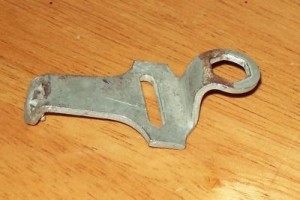 the fault of the child, and not just the fact that the key had no safe storage place to be. Of course, in all reality, the skating years were pretty short lived. All too soon, we were on to the next great toy or the next cool set of wheels…such as the skateboard. Once those came out, kids who were still using skates were considered babies…until Inline Skates came out. Then the ones who still had four wheeled skates or even skateboards were considered babies, who couldn’t balance on two wheeled skates…until trick skateboarding came along. Before long, that old pair of four wheeled skates and their corresponding key, were no longer the latest thing…and no one wanted them anyway, so the key no longer mattered.
the fault of the child, and not just the fact that the key had no safe storage place to be. Of course, in all reality, the skating years were pretty short lived. All too soon, we were on to the next great toy or the next cool set of wheels…such as the skateboard. Once those came out, kids who were still using skates were considered babies…until Inline Skates came out. Then the ones who still had four wheeled skates or even skateboards were considered babies, who couldn’t balance on two wheeled skates…until trick skateboarding came along. Before long, that old pair of four wheeled skates and their corresponding key, were no longer the latest thing…and no one wanted them anyway, so the key no longer mattered.
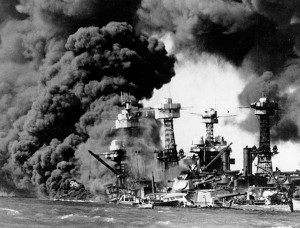
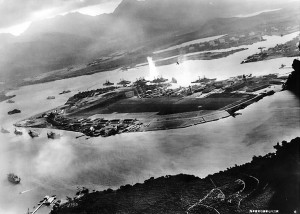 Located in the middle of Pearl Harbor is an island 335 acres in size. In Hawaii’s early days, it was known as Mokuumeume, meaning Island of Strife. It amazes me just how close that name is to the reality that is the island that is now known as Ford Island. I don’t think that strife is a constant companion of the island, but on this day, December 7, 1941…the date that will live in infamy, Ford Island was at center stage as one of the worst attacks in history took place on American soil. The participants, from the American side anyway, would have most certainly have chosen not to be there…if they had been given a choice. The island had changed hands several times, before finally ending up as a part of the military installation that was Pearl Harbor.
Located in the middle of Pearl Harbor is an island 335 acres in size. In Hawaii’s early days, it was known as Mokuumeume, meaning Island of Strife. It amazes me just how close that name is to the reality that is the island that is now known as Ford Island. I don’t think that strife is a constant companion of the island, but on this day, December 7, 1941…the date that will live in infamy, Ford Island was at center stage as one of the worst attacks in history took place on American soil. The participants, from the American side anyway, would have most certainly have chosen not to be there…if they had been given a choice. The island had changed hands several times, before finally ending up as a part of the military installation that was Pearl Harbor.
Every year, as Pearl Harbor Remembrance Day comes around, I try to write a story about that dreadful day, and this year, while looking at Pearl Harbor on Google Earth, my thoughts turned to that little island that was at the center of the attack. How must those men have felt? Everything happened so fast. There wasn’t even time to get the planes in the air. While the ships were being bombed around them, the pilots, mechanics, and airfield crew could only stand around watching…and dodging bullets. Of course, for most of them, that was impossible. The death toll that horrific day was 2403. In addition, there were 1178 people wounded. The emotional toll was beyond the imagination. This was the event that finally brought the United States into World War II.
I began to wonder what the people who were there were thinking as the events of the attack unfolded. There was no way to get off the island. If they had tried, they would surely have been killed. There were bombs going off on all sides of the island. Ships were sinking, airplanes were destroyed, and buildings were on fire or blown up. It was as if the world was coming to an end…or in reality, it was like waking up and finding yourself literally in Hell. My mind struggled to imagine how they must have felt…wishing and praying that all this was a dream and that they could be somewhere else…anywhere else. Still, they knew that it was real, and they were there, and 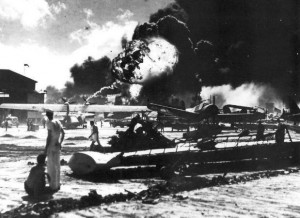
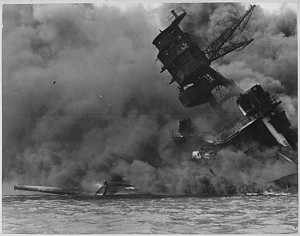 nothing would ever be the same again. They knew that the world as they had known it, had vanished…never to exist again. Of course, our country would come back from this attack, because we are a resilient people, but we would never be the same. We were less trusting of our enemies, something I see again in this day and age of terrorism, and something I think is important.
nothing would ever be the same again. They knew that the world as they had known it, had vanished…never to exist again. Of course, our country would come back from this attack, because we are a resilient people, but we would never be the same. We were less trusting of our enemies, something I see again in this day and age of terrorism, and something I think is important.
Being too trusting of our enemies in December of 1941, was exactly what paved the way for a surprise attack on December 7, 1941, and being too trusting today could do the same thing. It is imperative that we protect our people at all costs…even if it makes us seem heartless now. As in the case of the attack on Pearl Harbor, second chances at protecting our people don’t usually come. By the time we realize that we have made a mistake, it is too late, because it has become a fatal mistake. The men and women who survived the attack on Pearl Harbor knew first hand that our enemies hate us and want nothing less that death for America. That, I believe is the valuable lesson the people who survived that horrific attack took away that fateful day, and one we all need to seriously consider today.
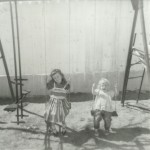 When I think back to my childhood, I always remember the carefree times. Summers spent with nothing but time on our hands, meant swimming at the Kelly Walsh pool, sunning in the back yard, and sack lunches eaten at the park, simply because it was something different to do. Of course, back then, you could easily send your kids to the park by themselves, and they could be gone for hours, and still you did not worry. That fact worked in our favor, because we were allowed to go so many places and do so many things on our own because the world was much safer than it is today.
When I think back to my childhood, I always remember the carefree times. Summers spent with nothing but time on our hands, meant swimming at the Kelly Walsh pool, sunning in the back yard, and sack lunches eaten at the park, simply because it was something different to do. Of course, back then, you could easily send your kids to the park by themselves, and they could be gone for hours, and still you did not worry. That fact worked in our favor, because we were allowed to go so many places and do so many things on our own because the world was much safer than it is today.
I remember the hours we spent at the school…the very place we couldn’t wait to get away from while school was still in session. Of course, we weren’t there for the  classroom, but rather for the playground. Just a couple of months earlier, we couldn’t wait for summer to come, because we were determined not to go anywhere near that school…oh well, the best laid plans…right? Nevertheless, just as soon as you got to those swings that were so very different from the ones at home, you knew that coming to the school in the summertime was a totally different thing, and very much acceptable. It didn’t even matter if you had to bring your little sister along, and going to the park was totally ok even if your parents had to come along. Somehow, even having that parental supervision couldn’t dampen your spirits.
classroom, but rather for the playground. Just a couple of months earlier, we couldn’t wait for summer to come, because we were determined not to go anywhere near that school…oh well, the best laid plans…right? Nevertheless, just as soon as you got to those swings that were so very different from the ones at home, you knew that coming to the school in the summertime was a totally different thing, and very much acceptable. It didn’t even matter if you had to bring your little sister along, and going to the park was totally ok even if your parents had to come along. Somehow, even having that parental supervision couldn’t dampen your spirits.
I’m not sure why these thoughts of summer vacation came to my mind today, other than perhaps the upcoming Christmas vacation, which is definitely a close second when it comes to the carefree days of vacation from school. I loved school, but there was just something about that break from school that always felt so 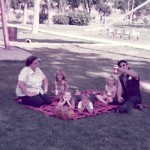 amazing. I just think every kid needs a break from school, even if they love it. There will always be time for kids to work every day for the rest of their lives, but summer vacation and Christmas break…well those are just pretty much for the kids, and of course their teachers, who I consider very blessed, by the way. I think most of us would love to have their summer vacations off. Nevertheless, that said, today found me thinking about the upcoming Christmas vacation that the kids will have, including two of my grandsons. It will be a welcome break from their studies, even if they do have to work at their jobs. To the kids, I say, enjoy those days while you can, because all too soon, the day will come when you too have a job and those long vacations are a thing of the past.
amazing. I just think every kid needs a break from school, even if they love it. There will always be time for kids to work every day for the rest of their lives, but summer vacation and Christmas break…well those are just pretty much for the kids, and of course their teachers, who I consider very blessed, by the way. I think most of us would love to have their summer vacations off. Nevertheless, that said, today found me thinking about the upcoming Christmas vacation that the kids will have, including two of my grandsons. It will be a welcome break from their studies, even if they do have to work at their jobs. To the kids, I say, enjoy those days while you can, because all too soon, the day will come when you too have a job and those long vacations are a thing of the past.

